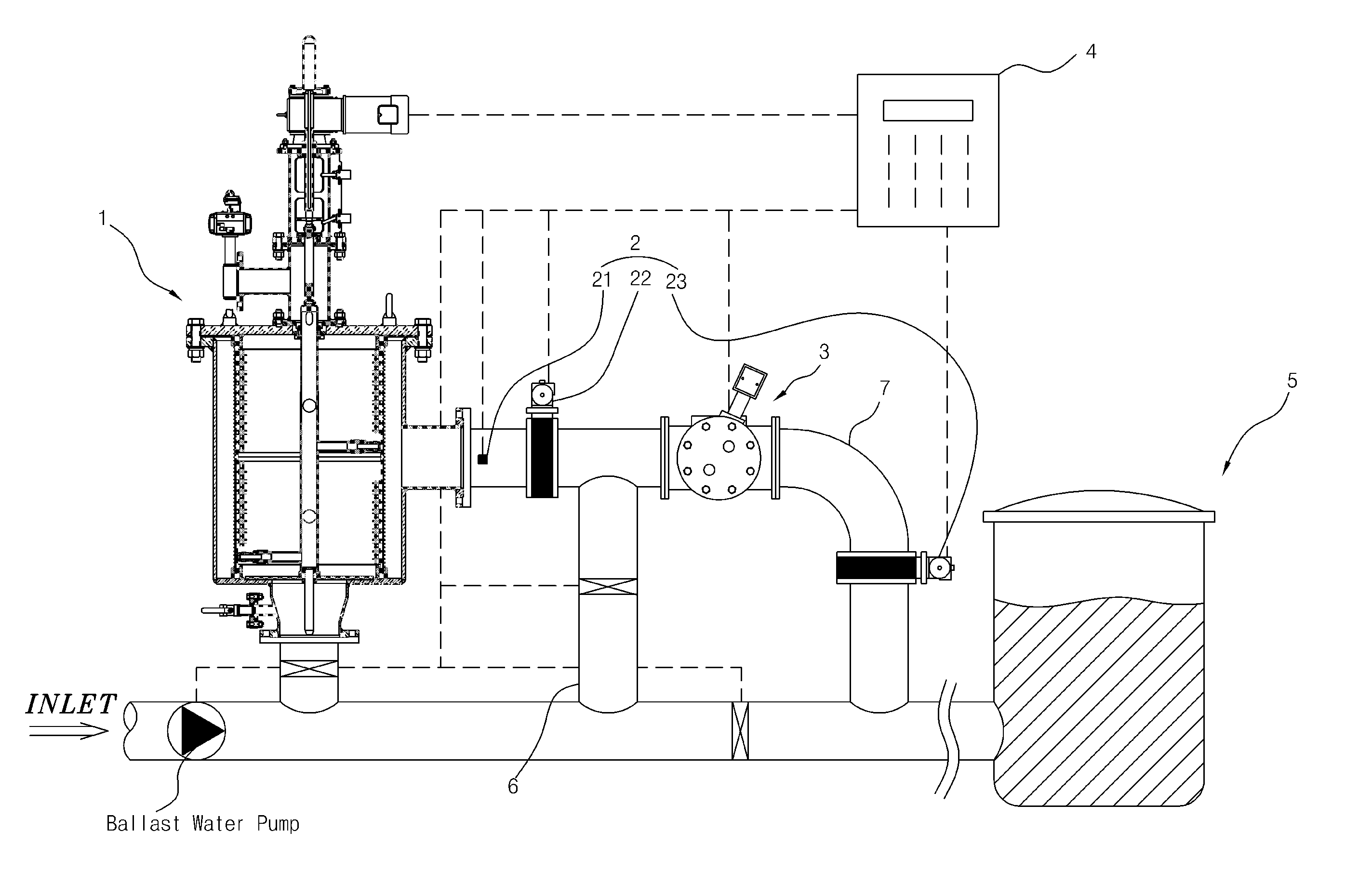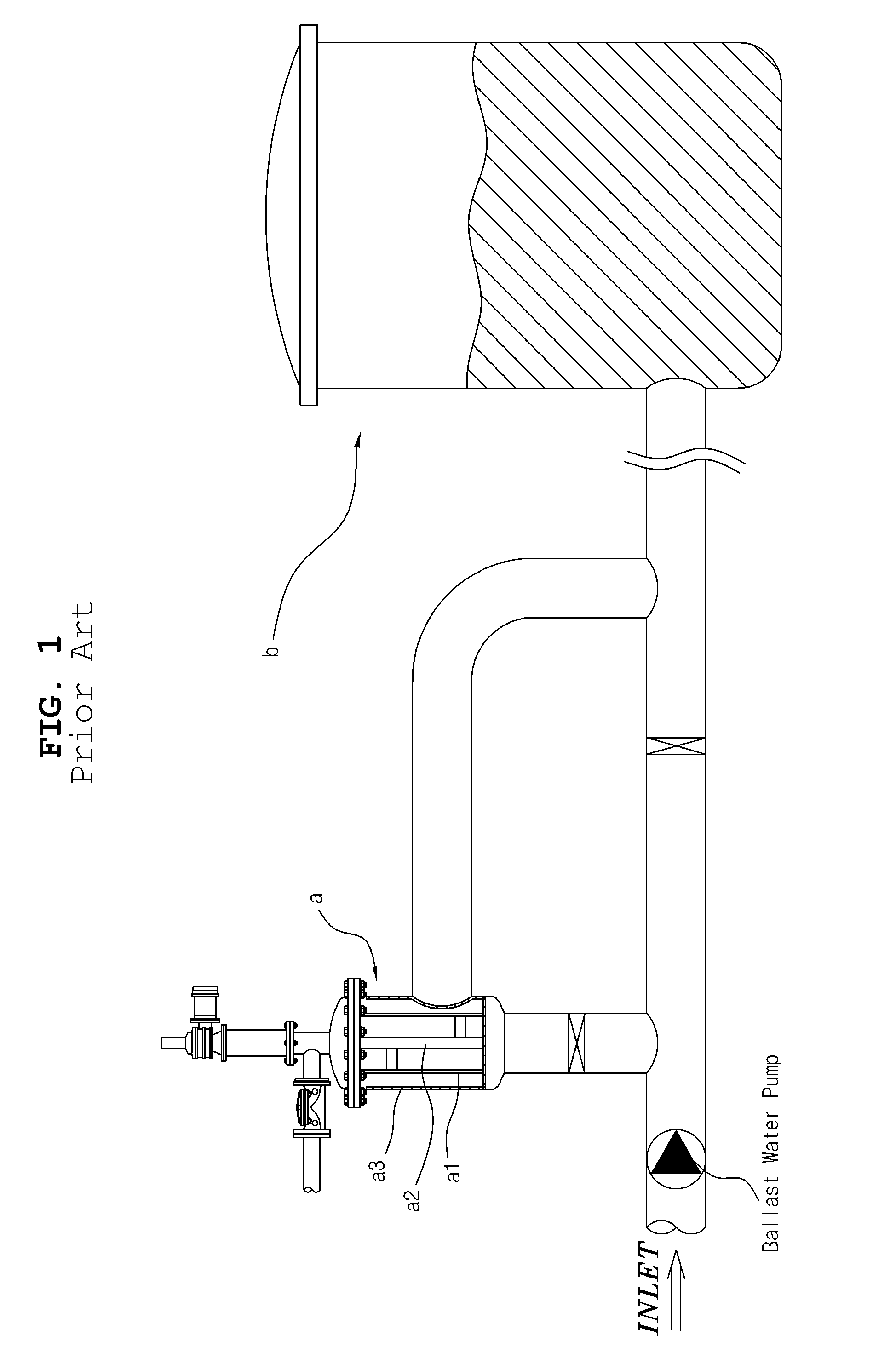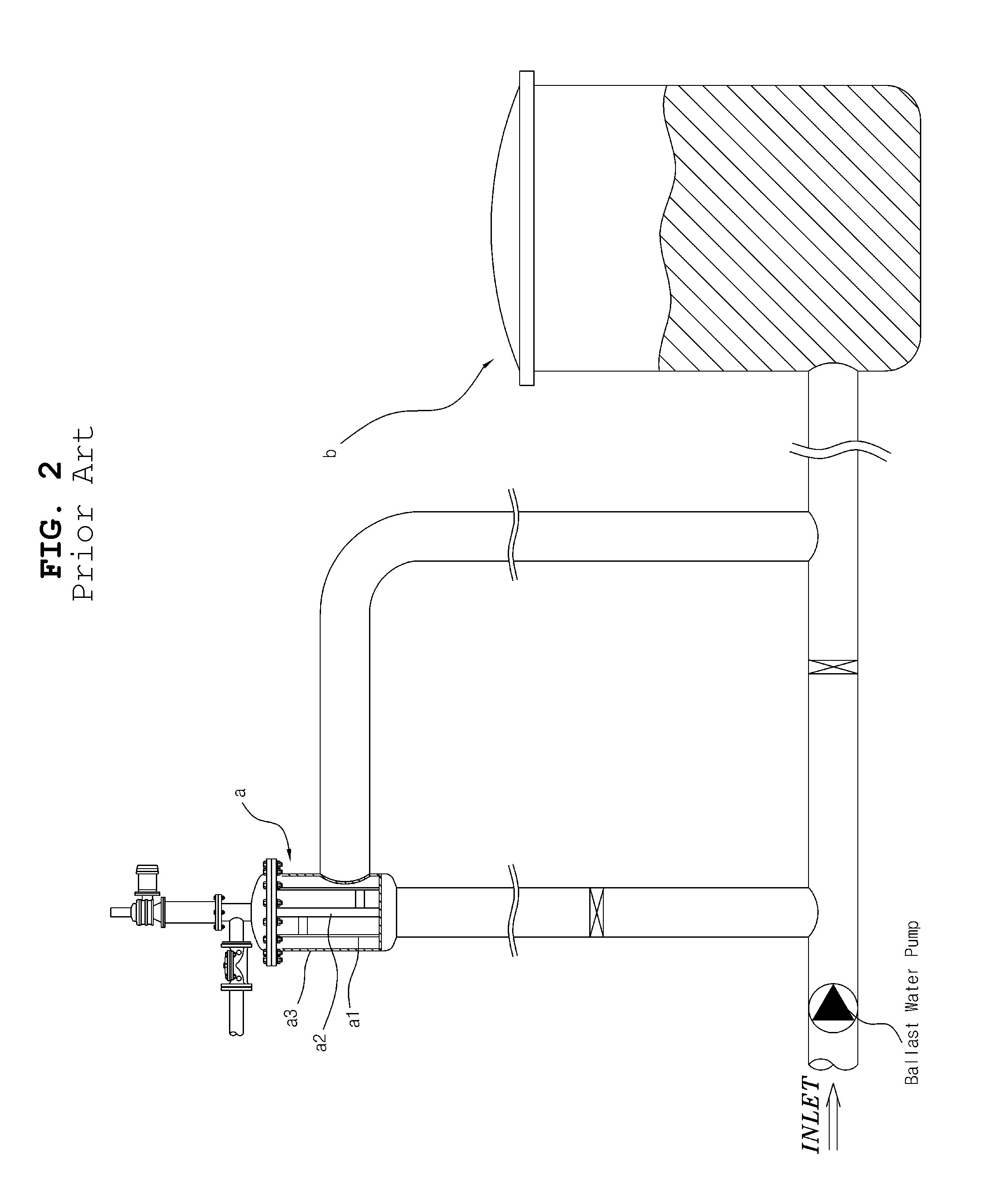Ballast water treatment system having a back-pressure formation part and control method thereof
a technology of ballast water treatment and formation unit, which is applied in the direction of treatment water, vessel construction, separation process, etc., can solve the problems of increasing damage done to the endemic marine ecosystem resulting from being attacked by exotic marine organism species, disturbing the ecosystem, and difficult to treat microorganisms or inorganic sources of contamination
- Summary
- Abstract
- Description
- Claims
- Application Information
AI Technical Summary
Benefits of technology
Problems solved by technology
Method used
Image
Examples
Embodiment Construction
[0030]Hereinafter, a ballast water treatment system having a back-pressure formation unit and a control method thereof according to the preferred embodiment of the present invention will be described in detail with reference to the accompanying drawings.
[0031]FIG. 3 is a schematic view showing a ballast water treatment system having a back-pressure formation unit, according to an embodiment of the present invention, FIG. 4 is a sectional view showing a filtering unit of FIG. 3, FIG. 5 is a partially cutaway perspective view showing an ultraviolet treatment unit of FIG. 3, and FIG. 6 is a perspective view showing a sleeve washing unit of the ultraviolet treatment unit.
[0032]Referring to FIGS. 3 to 6, a ballast water treatment system according to an embodiment of the present invention includes a filtering unit 1, a back-pressure formation unit 2, an ultraviolet treatment unit 3, and a control unit 4. The filtering unit 1 includes a body 11, a filter 12, and an automatic washing unit 1...
PUM
| Property | Measurement | Unit |
|---|---|---|
| pressure | aaaaa | aaaaa |
| back-pressure | aaaaa | aaaaa |
| volume | aaaaa | aaaaa |
Abstract
Description
Claims
Application Information
 Login to View More
Login to View More - R&D
- Intellectual Property
- Life Sciences
- Materials
- Tech Scout
- Unparalleled Data Quality
- Higher Quality Content
- 60% Fewer Hallucinations
Browse by: Latest US Patents, China's latest patents, Technical Efficacy Thesaurus, Application Domain, Technology Topic, Popular Technical Reports.
© 2025 PatSnap. All rights reserved.Legal|Privacy policy|Modern Slavery Act Transparency Statement|Sitemap|About US| Contact US: help@patsnap.com



